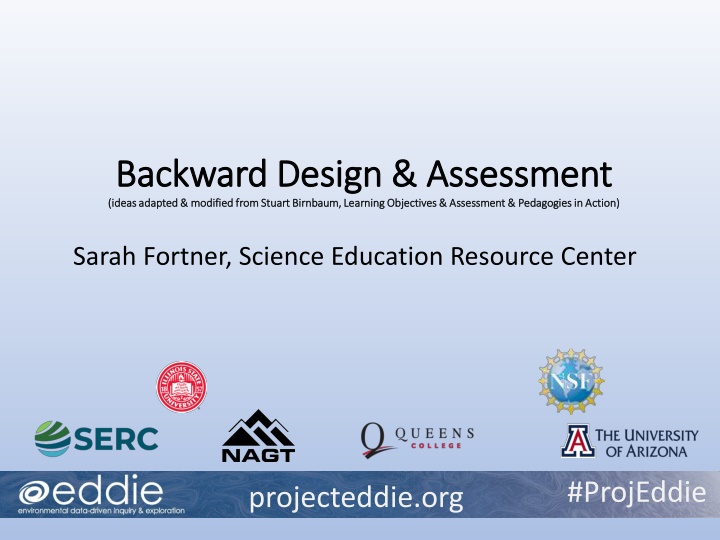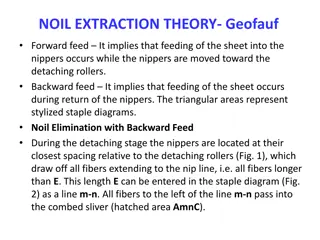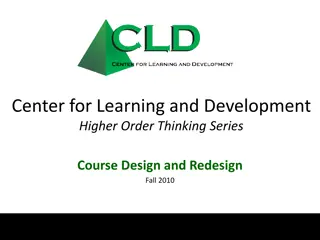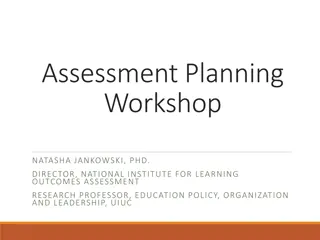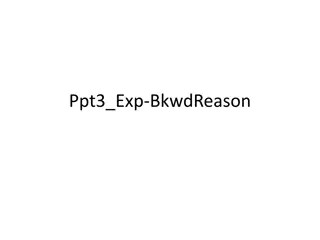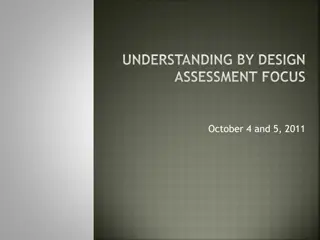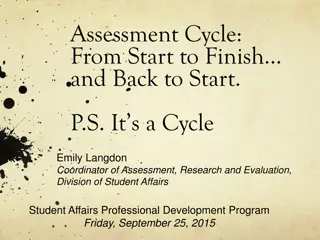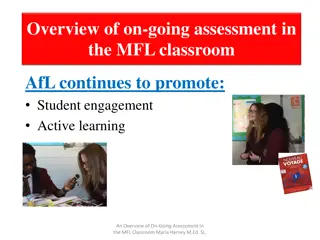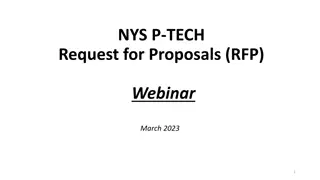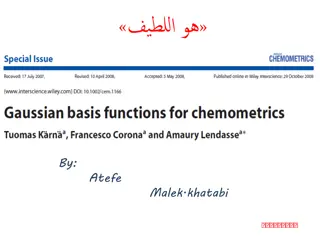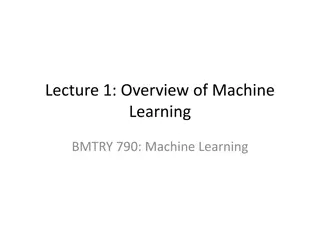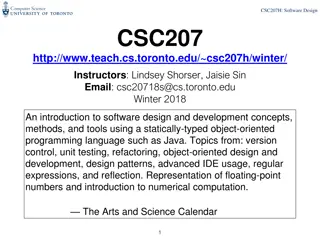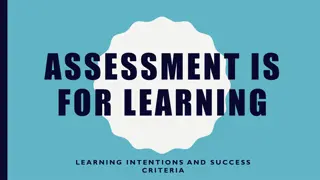Effective Course Design through Backward Assessment for Lasting Learning
Explore the significance of backward design and assessment in creating meaningful learning experiences. Discover key findings in student learning and strategies for developing enduring understandings. Consider what you want your students to remember five years later and the approaches to course design that can enhance their learning outcomes.
Download Presentation

Please find below an Image/Link to download the presentation.
The content on the website is provided AS IS for your information and personal use only. It may not be sold, licensed, or shared on other websites without obtaining consent from the author.If you encounter any issues during the download, it is possible that the publisher has removed the file from their server.
You are allowed to download the files provided on this website for personal or commercial use, subject to the condition that they are used lawfully. All files are the property of their respective owners.
The content on the website is provided AS IS for your information and personal use only. It may not be sold, licensed, or shared on other websites without obtaining consent from the author.
E N D
Presentation Transcript
Backward Design Backward Design & Assessment (ideas adapted & modified from Stuart Birnbaum, Learning Objectives & Assessment & Pedagogies in Action) (ideas adapted & modified from Stuart Birnbaum, Learning Objectives & Assessment & Pedagogies in Action) & Assessment Sarah Fortner, Science Education Resource Center #ProjEddie projecteddie.org
The Big Picture Think of a particularly significant learning experience you had Why was it significant for you? Record it in the Chat
Research on learning Collected research on learning All freely downloadable from the National Academies Press: http://nap.edu
Key findings Students come into our classes with preconceptions, not blank slates Students must have the opportunity to develop a conceptual framework that facilitates retrieval and builds on deep knowledge A metacognitive approach helps students monitor their own learning and become better learners Promising practices: Developing (and using) learning outcomes Engaging students in activities during class, in groups Getting and giving feedback before major assessments Creating a sense of belonging Research on learning
Five Years Out What Do You Want Your Students to Remember? enduring concepts (e.g., disturbance, equilibrium) how to transfer knowledge how to do specific statistical analyses critical to your field how to make environmental or equitable decisions based on quantitative reasoning
Approaches to Course Design Traditional Backward Enduring Understandings and Learning Goals List Course Topics Design Instruction Acceptable Evidence Design Exams/Papers Instructional Activities After Wiggins and McTighe (1998)
Backward Design 1. Identify desired results learning goals/outcomes Achievable and measurable 2. Determine acceptable evidence to that will demonstrate learning 3. Plan learning experiences that produce learning Use instructional strategies that foster engagement Design activities that give students practice
Backward Design Identify Desired Results Determine Acceptable Evidence Plan Learning Experiences and Instruction
What are some ways to frame learning goals that set up assessment (i.e. measuring learning)? Describe the skill or habit to be performed Use action verbs State Criteria Add the product, process or outcome Example from Wind and Ocean Ecosystems by Alanna Lecher & April Watson Students will be able to: convert between wind direction in degrees and wind direction using the cardinal and ordinal directions
Ways to Assess Learning Formative: While the learning is occurring Purpose to monitor student learning Immediate feedback Help students & faculty identify weaknesses Low stakes (ungraded) Summative: After learning has occurred Purpose to evaluate learning against some benchmark High stakes (graded)
Example of Formative Assessment Example of Formative Assessment Discuss your predictions with a small group. Which graphs did you disagree on? Write in the chat. Example adapted from Bomb Cyclones - They're Explosive! Jacqui Jenkins-Degan, Marine Technology Program, Cape Fear Community College
Example of Formative Assessment Example of Formative Assessment What are the ways you could adjust the lesson if you uncovered that the wave heigh graph was the most confusing? Write in the chat. Example adapted from Bomb Cyclones - They're Explosive! Jacqui Jenkins-Degan, Marine Technology Program, Cape Fear Community College
Example of Summative Assessment Example of Summative Assessment 1. Make a scatterplot of barometric pressure change over that 24-hour time period. (2 points for the correct scatter plot, 1 point for labeling your axis) 2. In order to determine if the storm is a bomb cyclone, you first need to determine if the barometric pressure decreased by 24 millibars over 24 hours. Add a trendline to your scatterplot and select the option to show the equation of the line on the chart. The slope of the trendline will show you the rate of change. The equation is written in the form y = mx + b, where m is the slope and b is the intercept. The value for m is the rate of barometric pressure change. 3. Equation for the line with the rate circled: _____________________ (1 point for the equation, and 1 point for circling the rate) 4. Was this an appropriate time frame to classify Winter Storm Grayson as a Bomb Cyclone? Why or why not? Use an example considering another 24- hour time period to help explain your answer. (1 point for answering correctly, 1 point for supporting your answer with evidence from another time period).
Example of Summative Assessment Example of Summative Assessment 3. Equation for the line with the rate circled: _____________________ (1 point for the equation, and 1 point for circling the rate) 4. Was this an appropriate time frame to classify Winter Storm Grayson as a Bomb Cyclone? Why or why not? Use an example considering another 24- hour time period to help explain your answer. (1 point for correctly answering whether the time period was appropriate, 1 point for supporting your answer with evidence from another time period). What is the value of specifying how you grade? Example adapted from Phenology Trends and Climate Change in Minnesota Pamela Freeman, The College of St. Scholastica
Example of Summative Assessment Example of Summative Assessment Rhodes, T. (2010). Assessing outcomes and improving achievement: Tips and tools for using rubrics. Washington, DC: Association of American Colleges and Universities.
Rubric for Summative Assessment Rubric for Summative Assessment What is the value of rubrics?
Wrapper (encapsulates multiple skills) Wrapper (encapsulates multiple skills) Share your Figure 8 with your classmates. Be sure to include the axes labels and the figure caption. These figures will be gathered and the class data will be shared so you can answer question 28. 28. Look at all the different Figure 8s created by your classmates. Which phenophases (if any) are now occurring earlier? How do the data help you reach this conclusion? Why might this/these phenophase(s) occur earlier? 29. Was there anything that surprised you as you worked through this exercise?
Supporting learning with assessment Supporting learning with assessment Learning goals align with assessment Learning goals are sign posted & expectations are clear Learning is scaffolded, often formative opportunities precede summative activities Students have opportunities to practice & make mistakes before evaluation Instructor time is valued (grading everything vs. grading strategically to improve learning e.g. wrappers)
Specific Guidance from the EDDIE Rubric Specific Guidance from the EDDIE Rubric Learning goals & assessment focused on quantitative reasoning & authentic context Learning goals & assessment focused on quantitative reasoning & authentic context Engage students in using tools to perform a visualization, analysis and generate mathematical/statistical output Compel students to make a claim/statement/conclusion, support it with evidence, and explain the coordination between the two Promote conceptual development within a disciplinary context 1.Calculate horizontal rates of change from GPS positions (either graphically OR from spreadsheet data) and plot the vectors on a map 2. Select stations in a transect across a strike-slip fault, download the data, and determine the horizontal rates for each, and plot 3.Interpret the changes in motion across the transect and estimate the width of area vulnerable to earthquakes from the plate boundary activity Example from Plate Tectonics: GPS Data, Boundary Zones, and Earthquake Hazards (Christopher Berg, Orange Coast College Julie Elliot, Purdue University, Beth Pratt-Situala, UNAVCO)
